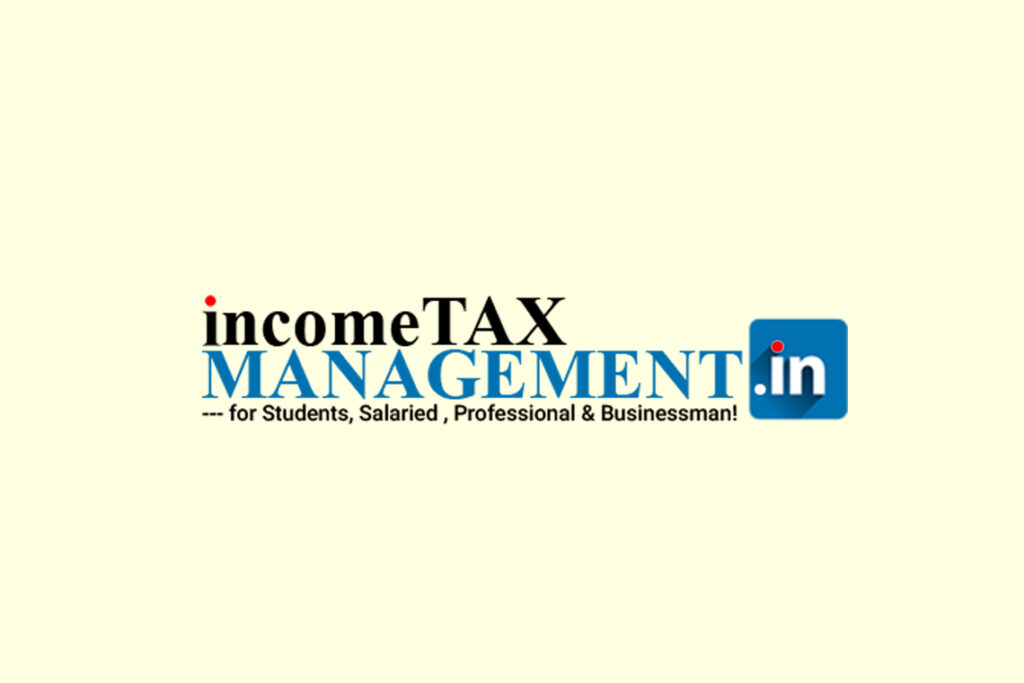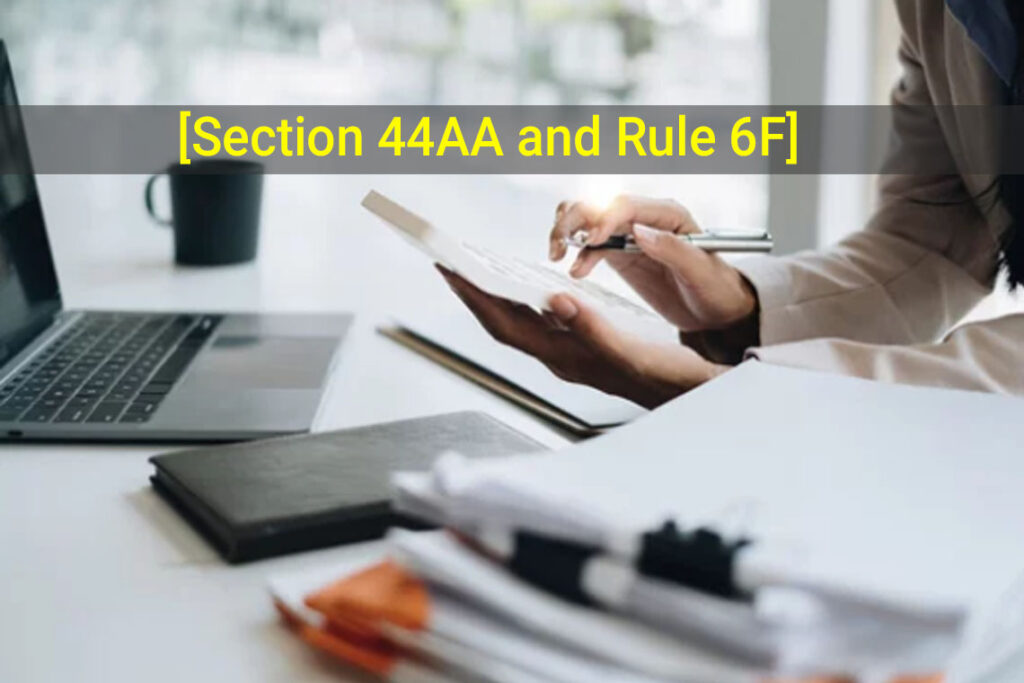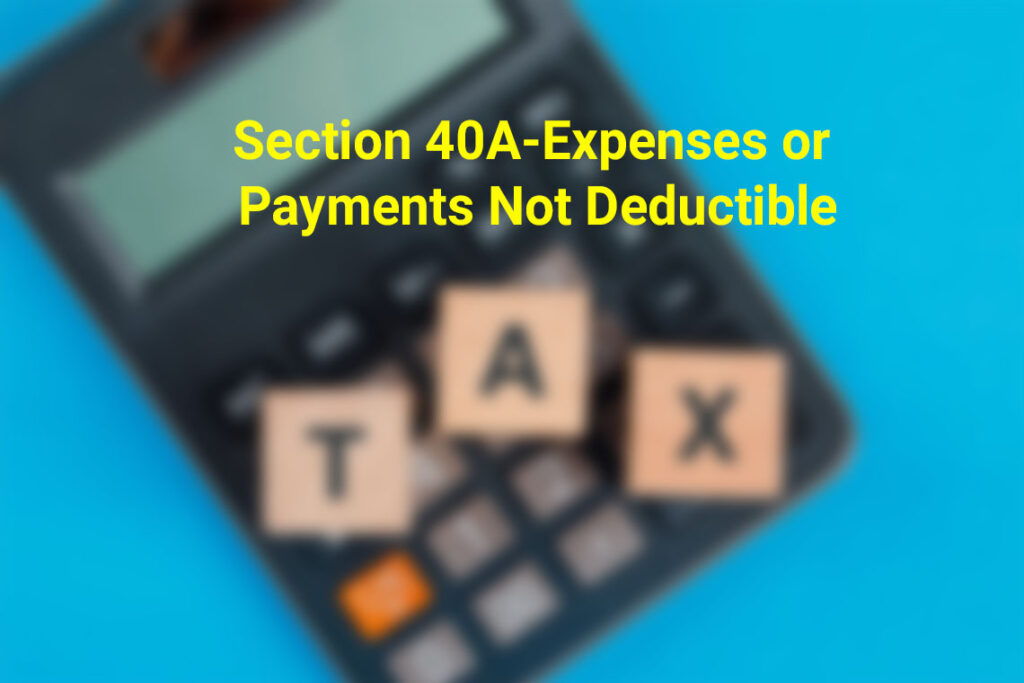Special Provisions for computing Business income in certain cases on the basis of Estimated Income Method under Section 44AD, 44ADA, 44AE has been described with examples.
1. Special Provisions for computing profits and gains of Any Business [Section 44AD] (excluding the business covered under Section 44AE)
(1) Eligible assessee engaged in an eligible business allowed to compute his business income on presumptive basis [Section 44AD(1)]:
Notwithstanding anything to the contrary contained in sections 28 to 43C, in the case of:
- an eligible assessee
- engaged in an eligible business,
- a sum equal to 8% of the total turnover or gross receipts of the assessee in the previous year on account of such business or, as the case may be, a sum higher than the aforesaid sum claimed to have been earned by the eligible assessee, shall be deemed to be the profits and gains of such business chargeable to tax under the head “Profits and gains of business or profession”.
(2) Eligible assessee allowed to presume his business income to be 6% instead of 8% or higher amount if certain conditions are satisfied [Proviso to section 44AD(1)]:
The eligible assessee can presume his income to be 6% instead of 8% or higher amount:
– in respect of the amount of total turnover or gross receipts
– which is received by (I) an account payee cheque or (ii) an account payee bank draft or (iii) use of electronic clearing system through a bank account or (iv) through such other electronic mode as may be prescribed during the previous year or before the due date specified in section 139(1) in respect of that previous year.
| (a) Meaning of Eligible Assessee [Clause (a) of Explanation to Section 44AD]:
“Eligible assessee” means,— (i) an individual, Hindu undivided family or a partnership firm, who is a resident, but not a limited liability partnership firm and (ii) who has not claimed deduction under any of the section IOAA or deduction under any provisions of Chapter VIA under the heading “C.—Deductions in respect of certain incomes” in the relevant assessment year (i.e., sections 80-IA to 80RRB); Thus, the scheme is not applicable to LLP, a company assessee or AOP/BOI, etc (b) Meaning of Eligible Business [Clause (b) of Explanation to section 44AD]: “Eligible business” means,— (i) any business except the business of plying, hiring or leasing goods carriages referred to in section 44AE; and (ii) whose total turnover or gross receipts in the previous year does not exceed an amount of two crore rupees. |
(3) Section 44AD not to apply in certain cases [Section 44AD(6)]:
The provisions of section 44AD, notwithstanding anything contained in the foregoing provisions, shall not apply to—
(i) a person carrying on profession as referred to in section 44AA( 1);
(ii) a person earning income in the nature of commission or brokerage; or
(iii) a person carrying on any agency business.
(4) Consequences if an eligible assessee opts for Section 44AD
(i) Deduction under sections 30 to 38 shall be deemed to have been allowed [Section 44AD(2)]:
Any deduction allowable under the provisions of sections 30 to 38 shall, for the purposes of section 44AD( 1), be deemed to have been already given full effect to and no further deduction under those sections shall be allowed.
A firm is not entitled to deduction on account of interest and salary paid to the partners if it is covered under section 44AD.
(ii) Written down value of any asset for the succeeding year shall be computed as if the assessee has claimed deduction [Section 44AD(3)]:
The written down value of any asset of an eligible business shall be deemed to have been calculated as if the eligible assessee had claimed and had been actually allowed the deduction in respect of the depreciation for each of the relevant assessment years.
(iii) Consequences if the eligible assessee who has once opted for section 44AD(1) does not opt for this scheme in the subsequent 5 assessment years [Section 44AD(4)]:
Where an eligible assessee declares profit for any previous year in accordance with the provisions of this section and he declares profit for any of the 5 assessment years relevant to the previous year succeeding such previous year not in accordance with the provisions of section 44AD(l), he shall not be eligible to claim the benefit of the provisions of this section for 5 assessment years subsequent to the assessment year relevant to the previous year in which the profit has not been declared in accordance with the provisions of section 44AD( 1).
For example, an eligible assessee claims to be taxed on presumptive basis under section AD for Assessment Year 2022-23 and offers income of Rs.9.6 lakh on the turnover of Rs.1.2 crore. For Assessment Year 2023-24 and Assessment Year 2024-25 also he offers income in accordance with the provisions of section 44AD. However, for Assessment Year 2025-26, he offers income of Rs.4 lakh on turnover of Rs.1.4 crore. In this case since he has not offered income in accordance with the provisions of section 44AD for five consecutive assessment years, after Assessment Year 2022-23, he will not be eligible to claim the benefit of section 44AD for next five assessment years, i.e., from Assessment Years 2026-27 to 2030-31.
(iv) Assessee to maintain books of account and get them audited if provisions of section 44AD(4) are applicable to him [Section 44AD(5)]:
Notwithstanding anything contained in the foregoing provisions of this section, an eligible assessee to whom the provisions of section 44AD(4) are applicable and whose total income exceeds the maximum amount which is not chargeable to income-tax, shall be required to keep and maintain such books of account and other documents as required under section 44AA(2) and get them audited and furnish a report of such audit as required under section 44AB.
2. Special Provision for computing profits and gains of profession on Presumptive Basis [Section 44ADA]
(1) Resident assessee engaged in the profession referred to in section 44AA(1) can opt for presumptive income in certain cases [Section 44ADA(1)]:
Notwithstanding anything contained in sections 28 to 43C,—
- in the case of an assessee being individual or a partnership firm, being a resident in India,
- who is engaged in a profession referred to in section 44AA( 1) and
- whose total gross receipts’ do not exceed 50,00,000 in a previous year,
a sum equal to 50% of the total gross receipts of the assessee in the previous year on account
of such profession or, as the case may be, a sum higher than the aforesaid sum claimed to
have been earned by the assessee, shall be deemed to be the profits and gains of such
profession chargeable to tax under the head “Profits and gains of business or profession”.
| 1. The provision of this section shall apply to an assessee, being an individual or partnership firm. not being an LLP as defined under section 2(1)(n) of Limited Liability Partnership Act, 2008.
2. Profession referred to in section 44AA(1): Legal, medical, engineering or architectural profession, or profession of accountancy or technical consultancy or interior decoration or any other profession as is notified by the Board in the Official Gazette. Authorised representatives, film artists, company secretaries and profession of Information Technology have been notified for this purpose. |
(2) Consequences if the assessee opts for Presumptive Income Scheme:
(a) Deduction under Section 30 to 38 shall be deemed to have been allowed [Section 44ADA(2)]:
Any deduction allowable under the provisions of sections 30 to 38 shall, for the purposes of section 44ADA(l), be deemed to have been already given full effect to and no further deduction under those sections shall be allowed.
Further, a firm is not entitled to deduction on account of interest and salary paid to the partners if he is covered under section 44ADA.
(b) Written down value of any asset for the succeeding year shall be computed as if the assessee has claimed deduction [Section 44ADA(3)]:
The written down value of any asset used for the purposes of profession shall be deemed to have been calculated as if the assessee had claimed and had been actually allowed the deduction in respect of the depreciation for each of the relevant assessment years.
(c) Assessee to maintain accounts and get them audited f he claims profits to be less than 50% of the gross receipts [Section 44ADA(4)]:
Notwithstanding anything contained in the foregoing provisions of this section, an assessee who claims that his profits and gains from the profession are lower than the profits and gains specified in section 44ADA(1) and whose total income exceeds the maximum amount which is not chargeable to income-tax, shall be required to keep and maintain such books of account and other documents as required under section 44AA(1) and get them audited and furnish a report of such audit as required under section 44AB.
3. Special provisions for computing profits and gains of business of Plying, Hiring Or Leasing Goods Carriages [Section 44AE]
(1) Assessee engaged in the business of plying, hiring or leasing such goods carriages can opt for presumptive income in certain cases [Section 44AE(1)]:
Notwithstanding anything to the contrary contained in sections 28 to 43C,—
- in the case of an assessee,
- who owns not more than ten goods carriages at any time during the previous year and
- who is engaged in the business of plying, hiring or leasing such goods carriages,
– the income of such business chargeable to tax under the head “Profits and gains of business or profession” shall be deemed to be the aggregate of the profits and gains, from all the goods carriages owned by him in the previous year, computed in accordance with the provisions of section 44AE(2).
(2) Presumptive amount of income to be computed [Section 44AE(2)]:
For the purposes of section 44AE(1), the profits and gains from each goods carriage,—
(i) being a heavy goods vehicle, shall be an amount equal to Rs.1000 per ton of gross vehicle weight or unladen weight, as the case may be, for every month or part of a month during which the heavy goods vehicle is owned by the assessee in the previous year or an amount claimed to have been actually earned from such vehicle, whichever is higher;
(ii) other than heavy goods vehicle, shall be an amount equal to Rs.7,500 for every month or part of a month during which the goods carriage is owned by the assessee in the previous year or an amount claimed to have been actually earned from such goods carriage, whichever is higher.
(3) Consequences if the assessee opts for presumptive income scheme:
(a) Deduction under sections 30 to 38 shall be deemed to have been allowed [Section 44AE(3)]:
Any deduction allowable under the provisions of sections 30 to 38 shall, for the purposes of section 44AE(1), be deemed to have been already given full effect to and no further deduction under those sections shall be allowed:
Provided that where the assessee is a firm, the salary and interest paid to its partners shall be deducted from the income computed under section 44AE(1) subject to the conditions and limits specified in section 40(b).
Note.—Such salary and interest is not allowable as deduction in case of section 44AD and section 44ADA.
(b) Written down value of any asset for the succeeding year shall be computed as if the assessee has claimed deduction [Section 44AE(4)]:
The written down value of any asset used for the purpose of the business referred to in section 44AE(l) shall be deemed to have been calculated as if the assessee had claimed and had been actually allowed the deduction in respect of the depreciation for each of the relevant assessment years.
(c) Provisions of sections 44AA and 44AE not to apply and for computing monetary limit of maintenance of accounts and tax audit, gross receipt from such business not to be included [Section 44AE(5)]:
The provisions of sections 44AA and 44AB shall not apply insofar as they relate to the business referred to in section 44AE(1) and in computing the monetary limits under those sections, the gross receipts or, as the case may be, the income from the said business shall be excluded.
(d) Assessee to maintain accounts and get them audited if he claims profits to be less than the specified amount [Section 44AE(7)]:
Notwithstanding anything contained in the foregoing provisions of this section, an assessee may claim lower profits and gains than the profits and gains specified in sections 44AE(1) and (2), if he keeps and maintains such books of account and other documents as required under section 44AA(2) and gets his accounts audited and furnishes a report of such audit as required under section 44AB.
Note.—For applying section 44AE(7), the quantum of total income is irrelevant.
| 1. The expressions “goods carriage”, “gross vehicle weight” and ‘unladen weight” shall have the respective meanings assigned to them in section 2 of the Motor Vehicles Act, 1988.
The expression “heavy goods vehicle” means any goods carriage, the gross vehicle weight of which exceeds 12000 kilograms. According to the Motor Vehicles Act. 1988, the expression (i) “Goods carriage” means: (a) any motor vehicle constructed or adapted for use solely for the carriage of goods, or (b) any motor vehicle not so constructed or adapted when used for the carriage of goods (ii) “Gross vehicle weight” means : in respect of any vehicle the total weight of the vehicle and load certified and registered by the registering authority as permissible for that vehicle. (iii) “Unladen weight” means : the weight of a vehicle or trailer including all equipment ordinarily used with the vehicle or trailer when working, but excluding the weight of a driver or attendant; and where alternative parts or bodies are used the unladen weight of the vehicle means the weight of the vehicle with the heaviest such alternative part or body. 2. An assessee, who is in possession of a goods carnage, whether taken on hire purchase or on instalments and for which the whole or part of the amount payable is still due, shall be deemed to be the owner of such goods carriage. 3. The income estimated as per section 44AE, shall be his income from the business of plying, hiring or leasing goods carriages. This income will be aggregated with other income of the assessee and deductions under sections 80C to 80U, if any, will be available to the assessee, subject to fulfilment of conditions mentioned therein. 4. Income from vehicles is to be computed for every month or part of the month during which these were owned by the assessee even though these are not actually used for business. 5. Provisions of section 44AE are not applicable in case the assessee does not own any goods carriage or owns more than 10 goods carriages or where he declares lower profits and gains than the profits and gains specified in section 44AE. |


![Compulsory Tax Audit of Accounts [Section 44AB]](https://incometaxmanagement.in/wp-content/uploads/2023/09/Compulsory-Tax-Audit-of-Accounts-Section-44AB-1024x683.jpg)





![General Deductions [Section 37(1)]](https://incometaxmanagement.in/wp-content/uploads/2023/09/General-Deductions-Section-371-1024x683.jpg)

![Expenses allowed as a Deduction [Sections 30 to 35]](https://incometaxmanagement.in/wp-content/uploads/2023/09/Expenses-allowed-as-a-Deduction-Sections-30-to-35-1024x683.jpg)